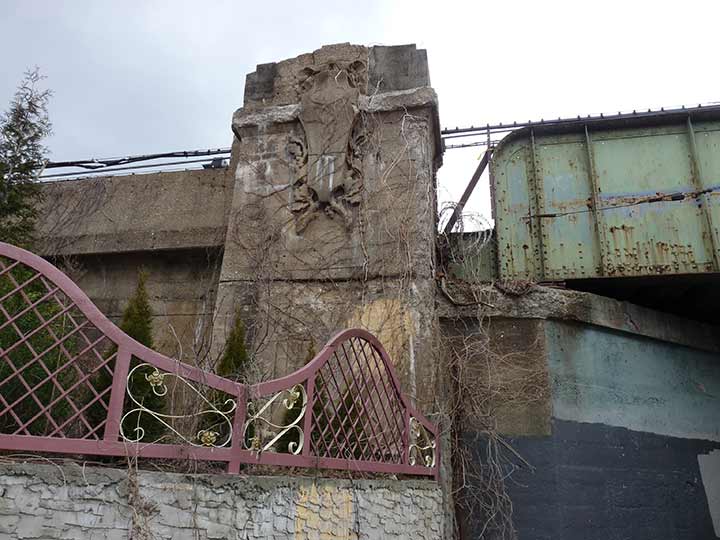
THE former New York, Westchester & Boston Railway celebrated its centennial in 2012. When conceived, it was assumed that it would eventually reach Boston, but instead at its lengthiest, it ran from southern Mott Haven in the Bronx to two terminals in Westchester County, at White Plains and at Port Chester. Originally conceived in 1872, it was delayed for a few decades by the Panic of 1873, essentially a depression. Once emerging from receivership in the early 1900s, the railroad began construction in 1906 and built north, with the northernmost stations at Rye and Port Chester opening in 1928 and 1929. When most stations opened in 1912, the NYW&B was considered state of the art for its time, taking power from overhead lines, no grade crossings, high platforms to enable comfortable boarding, and spacious, architecturally attractive ticket offices/station houses.
Despite its advantages, the NYW&B was not a success. When it opened, the automobile industry was beginning to take off — by the 1920s, scenic parkways had appeared to handle intracity auto traffic, and the NYW&B could not really compete as a commuter railroad because it ended its run in Mott Haven and riders had to detrain and switch to the Third Avenue El to get to Manhattan. It soldiered on for a decade, but finally declared bankruptcy in 1937, ending service.
But all was not lost. The City of New York saw a golden opportunity to expand service into Pelham Gardens and Eastchester, and purchased the NYW&B right of way, stations, and tracks. After making modifications like adding a third rail, the NYW&B became the Dyre Avenue Shuttle in 1940, and after new tracks were installed to connect it with the White Plains Road el in the 1950s, the full-fledged Dyre Avenue Line, today the home of the #5 train.
The emblem of the New York, Westchester and Boston RR was the Roman god Mercury and his caduceus, or rod with two entwined snakes. You can see a bas relief depicting the caduceus at the overhead RR crossing at Matthews and Brady Avenues in Bronxdale.
In early April 2012 I walked the route, or the closest possible approximation along the tracks, from the Bronx Park East station all the way northeast to Dyre Avenue. It gave me a chance to traverse the Pelham Gardens and Eastchester sections of the Bronx, which I’m in just a few times per year at most, and to approach both the subway route and the neighborhoods it travels through with a fresh perspective.
5/11/23
As always, “comment…as you see fit.” I earn a small payment when you click on any ad on the site.


4 comments
You should have invited me because I am a rail fan whose also into geography without being a know-it-all; 63 months ago I lived in The Bronx all of my life, then I moved to Staten Island staying another 30 months, and now I’m living in Poughkeepsie the last 30 of 31 months-thankfully I am able to access NYC every weekend taking care of business and entertainment, currently nursing my foot (figure of speech): it’s a Real ASS•state issue.
Now that you live in Poughkeepsie, do you pick your feet?
https://www.bing.com/videos/search?&q=The+French+Connection%2fpick+your+feet+in+poughkeepsie%3f&qpvt=The+French+Connection%2fpick+your+feet+in+poughkeepsie%3f&view=detail&mid=FD676C53EEB86CDEE837FD676C53EEB86CDEE837&FORM=VDQVAP&ru=%2Fvideos%2Fsearch%3Fq%3DThe%2BFrench%2BConnection%252fpick%2Byour%2Bfeet%2Bin%2Bpoughkeepsie%253f%26qpvt%3DThe%2BFrench%2BConnection%252fpick%2Byour%2Bfeet%2Bin%2Bpoughkeepsie%253f%26FORM%3DVDRE&rvsmid=AD5979BB08D8E0F62D80AD5979BB08D8E0F62D80&ajaxhist=0
Actual NYC subway service between Dyre Av and E180th St began May 15,1941. The E180th St station of the NYW&B remained in use. On May 6, 1957 thru service began and the E180th St station of the White Plains Road line was used . At that point the NYW&B station was used for train storage into the 1990’s.
It must be understood that the automobile had over subsidized highways, while rail, especially passenger rail, had to meet all of its expenses without any governmental assistance of any kind….